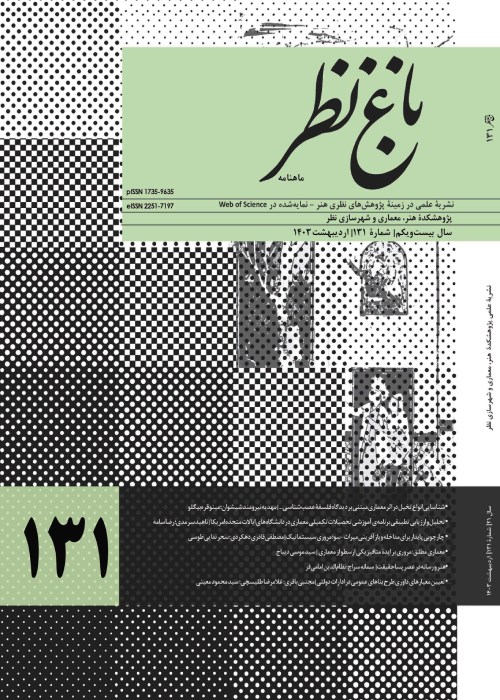The Changes of Tabriz Spatial Organization from Early Islamic Era to Gajar Era
Author(s):
Abstract:
The city spatial organization is the perception of the city structural elements and interpretation of their relations. There has been a purposeful order and also a permanent association among the elements which this creates a meaning as a coherent entirety and single identity. The most important reason which makes the cities different from each other, is their different spatial organization which this difference results from the variety of orders in the cities as a system. To understand the totality of Tabriz and its spatial organization, it is necessary to discover the order of the city elements and results from surveying the relation between spatial organization indicators, is necessary.
Discovering of order that dominates the city elements and also results from surveying the relation between spatial organization indicators is necessary to understand the totality of Tabriz and its spatial organization.
The aim of this paper is to analyze Tabriz spatial organization from early Islam to Gajar era according to systemic theory and to determine the rules of Tabriz spatial organization. Results of this research reveals that the widespread communication between East and West and also earth structure limits at the northwest area of Iran are the factors which set up the city. Earthquake and neighboring countries attacks are the threatening factors throughout history. These factors have an important role in Tabriz spatial organization. By analyzing the city spatial organization indicators and their changes in historic eras, the rules of Tabriz spatial organization was defined: The city center in the process of city changes was a fixed element and also an identity for the city, the city territory had a fixed condition and was being changed in every period, the neighborhoods of the city had been influenced by the fixed city center and also had been located according to the main paths of the city and the city structure as a distinct and unique element has relatively radial network from center toward the main edges of the city. The method of this research has been descriptive- analytic and the library has been used to collect data and also data were analyzed by using the historical documents such as travel pieces, pictorial documents and also rational perceptions.
Discovering of order that dominates the city elements and also results from surveying the relation between spatial organization indicators is necessary to understand the totality of Tabriz and its spatial organization.
The aim of this paper is to analyze Tabriz spatial organization from early Islam to Gajar era according to systemic theory and to determine the rules of Tabriz spatial organization. Results of this research reveals that the widespread communication between East and West and also earth structure limits at the northwest area of Iran are the factors which set up the city. Earthquake and neighboring countries attacks are the threatening factors throughout history. These factors have an important role in Tabriz spatial organization. By analyzing the city spatial organization indicators and their changes in historic eras, the rules of Tabriz spatial organization was defined: The city center in the process of city changes was a fixed element and also an identity for the city, the city territory had a fixed condition and was being changed in every period, the neighborhoods of the city had been influenced by the fixed city center and also had been located according to the main paths of the city and the city structure as a distinct and unique element has relatively radial network from center toward the main edges of the city. The method of this research has been descriptive- analytic and the library has been used to collect data and also data were analyzed by using the historical documents such as travel pieces, pictorial documents and also rational perceptions.
Keywords:
Language:
Persian
Published:
Bagh-e Nazar, Volume:14 Issue: 51, 2017
Pages:
21 to 32
magiran.com/p1734390
دانلود و مطالعه متن این مقاله با یکی از روشهای زیر امکان پذیر است:
اشتراک شخصی
با عضویت و پرداخت آنلاین حق اشتراک یکساله به مبلغ 1,390,000ريال میتوانید 70 عنوان مطلب دانلود کنید!
اشتراک سازمانی
به کتابخانه دانشگاه یا محل کار خود پیشنهاد کنید تا اشتراک سازمانی این پایگاه را برای دسترسی نامحدود همه کاربران به متن مطالب تهیه نمایند!
توجه!
- حق عضویت دریافتی صرف حمایت از نشریات عضو و نگهداری، تکمیل و توسعه مگیران میشود.
- پرداخت حق اشتراک و دانلود مقالات اجازه بازنشر آن در سایر رسانههای چاپی و دیجیتال را به کاربر نمیدهد.
In order to view content subscription is required
Personal subscription
Subscribe magiran.com for 70 € euros via PayPal and download 70 articles during a year.
Organization subscription
Please contact us to subscribe your university or library for unlimited access!


